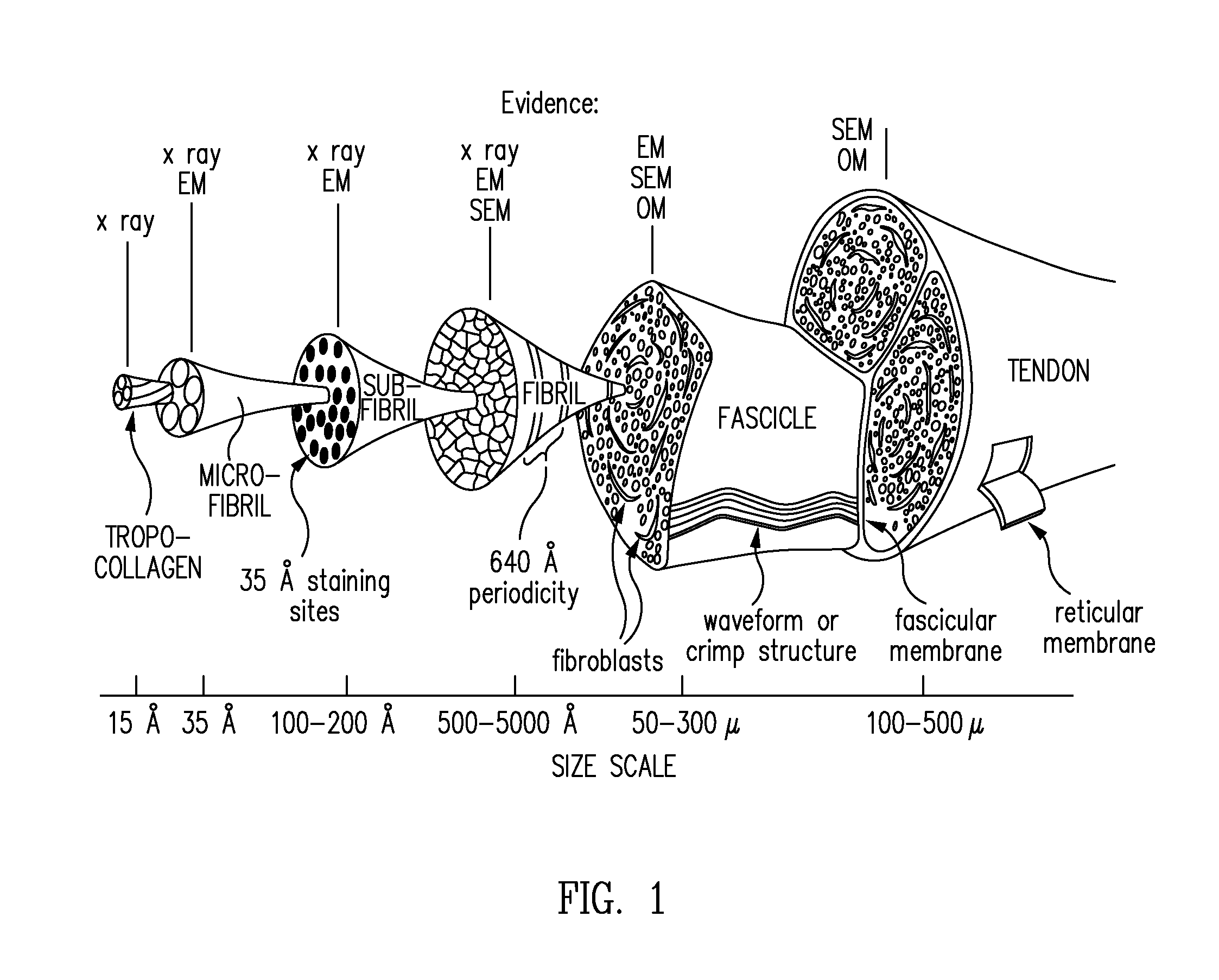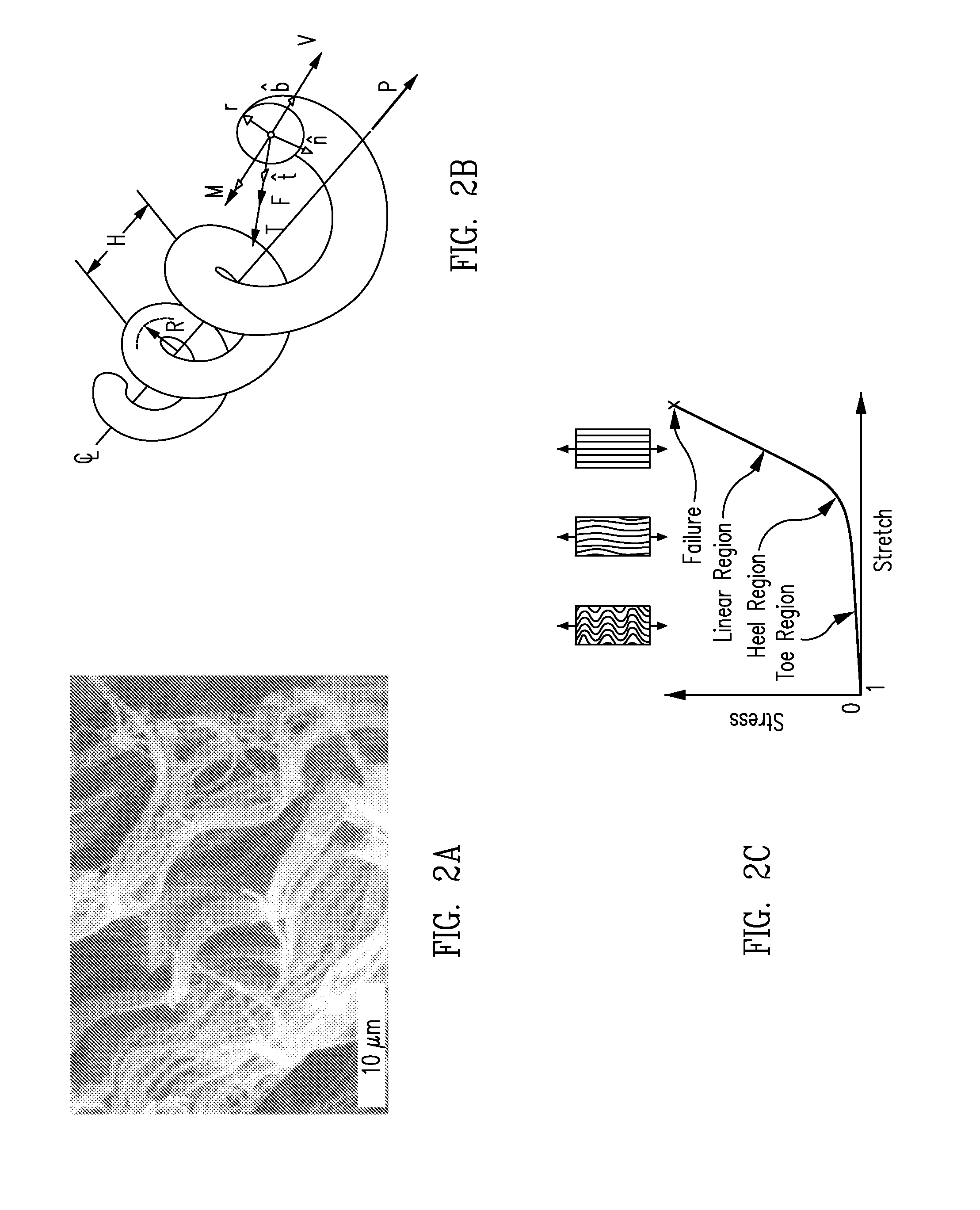Biocomposites and methods of making the same
- Summary
- Abstract
- Description
- Claims
- Application Information
AI Technical Summary
Benefits of technology
Problems solved by technology
Method used
Image
Examples
example 1
[0110]Cell seeding on oriented collagen film (matrix) with tendon-like structure on a glass chip. Fibroblasts and mesenchymal stem cells (mouse adipose-derived and human bone marrow derived) were used. Cells were seeded at 4-6,000 cells / cm2 onto collagen substrates on glass chips placed in 6-well cell culture plates, in growth medium with no FBS and allowed to attach. Then the medium was changed for complete growth medium (with 10% FBS), in which cells were maintained up to one week. The cells align on the substrate according to its pattern, see the FIG. A2. Cells are observed until they form a monolayer sheet (up to one week).
example 2
[0111]cell seeding on a collagen pseudo-fiber. Fibroblasts were used. Cells were seeded on a oriented collagen pseudo-fiber in a high density cell suspension (106 cells / ml): a 3-cm pseudo-fiber was placed in an 15-ml Falcon tube with 1 ml of cell suspension and incubated on a shaker for 30 min at 37° C. in CO2 incubator. The cell-seeded pseudo-fiber was then placed into a well of a 6-well culture plate, with its ends fixed with glass chips. Cell attachment was verified after seeding with light microscopy, and cell migration from the pseudo-fiber was monitored with light and fluorescent microscopy, as shown in FIG. 14.
example 3
[0112]Collagen ribbon is dipped into an acidic solution of orthovanadate which has a sodium chloride buffer. As a result of ion-exchange reactions, the orthovanadate will crosslink the collagen fibrils and form collagen-vanadate composite matrix, which preserves the structural characteristics. Neutralization in PBS (Phosphate Buffered Saline) solution and rinsing in DI water removes superfluous orthovanadate.
PUM
| Property | Measurement | Unit |
|---|---|---|
| Length | aaaaa | aaaaa |
| Temperature | aaaaa | aaaaa |
| Angle | aaaaa | aaaaa |
Abstract
Description
Claims
Application Information
 Login to View More
Login to View More - R&D
- Intellectual Property
- Life Sciences
- Materials
- Tech Scout
- Unparalleled Data Quality
- Higher Quality Content
- 60% Fewer Hallucinations
Browse by: Latest US Patents, China's latest patents, Technical Efficacy Thesaurus, Application Domain, Technology Topic, Popular Technical Reports.
© 2025 PatSnap. All rights reserved.Legal|Privacy policy|Modern Slavery Act Transparency Statement|Sitemap|About US| Contact US: help@patsnap.com



